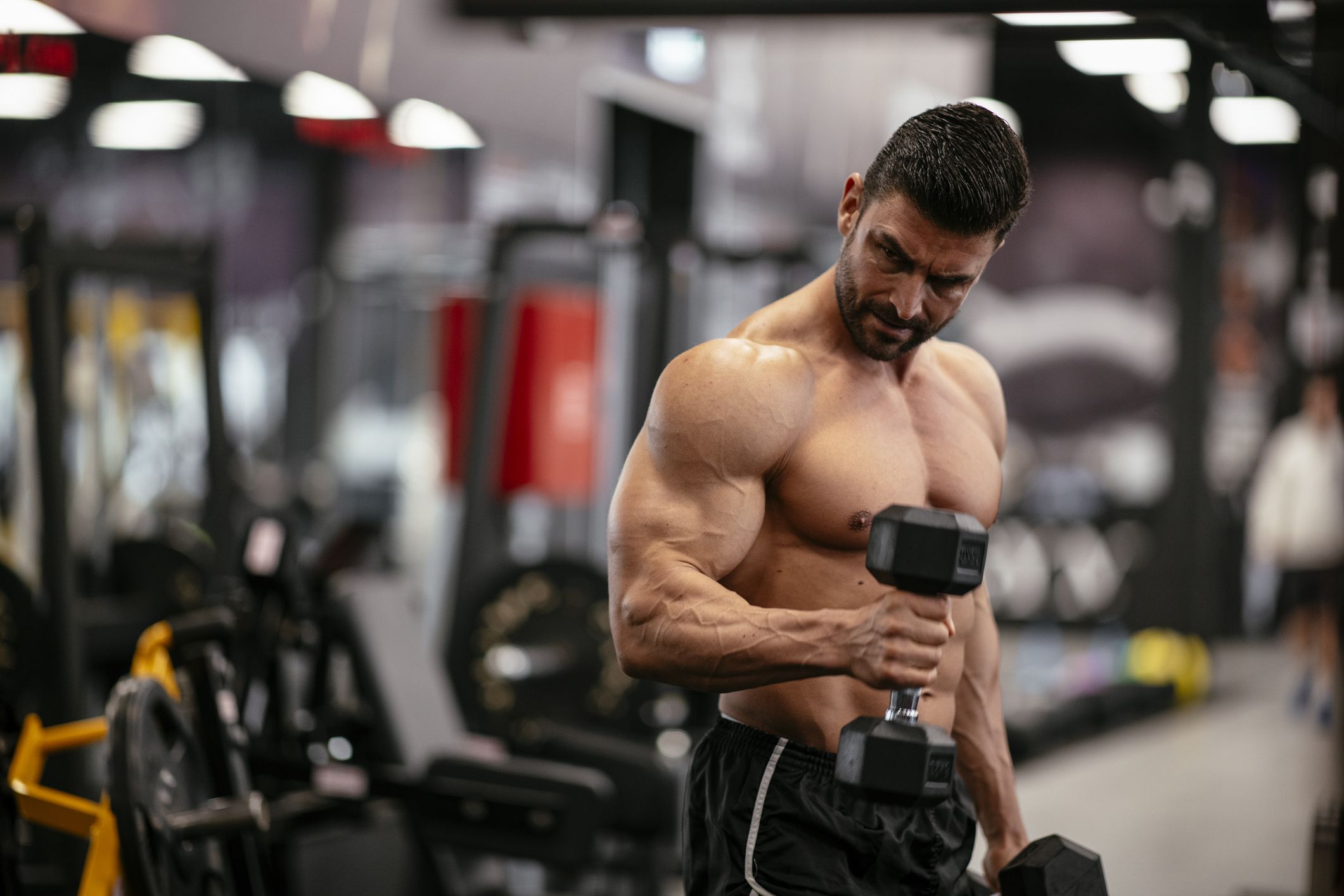Bigger, more defined biceps are a goal for many fitness enthusiasts, and for good reason.
Strong, well-sculpted arms not only improve your overall appearance but also enhance functional strength for everyday activities.
Achieving impressive biceps requires a combination of effective exercises, proper technique, and consistency.
In this article, we’ll cover the top 10 biceps exercises to help you build stronger, bigger arms. Let’s dive in!
Understanding Biceps Anatomy
Before jumping into the exercises, it’s essential to understand the anatomy of the biceps. Your biceps, or biceps brachii, consist of two primary heads:
- The Long Head: This part runs along the outer side of your upper arm and contributes to the biceps’ peak when flexed.
- The Short Head: Located on the inner side, it adds width and thickness to the biceps.
Both heads work together to flex the elbow, rotate the forearm, and stabilize the shoulder.
Effective biceps training targets both heads to ensure balanced development and maximum growth.
Benefits of Training Biceps
Strong biceps offer more than just aesthetic appeal. Here are a few benefits:
- Improved Strength: Strong biceps enhance your performance in pulling movements like chin-ups, rows, and deadlifts.
- Injury Prevention: Strengthening your biceps helps support your elbows and shoulders, reducing the risk of injuries.
- Functional Fitness: Everyday tasks like lifting heavy objects or carrying groceries become easier with stronger arms.
Now that you understand the basics, let’s move on to the exercises.
The Top 10 Biceps Exercises
1. Barbell Bicep Curl
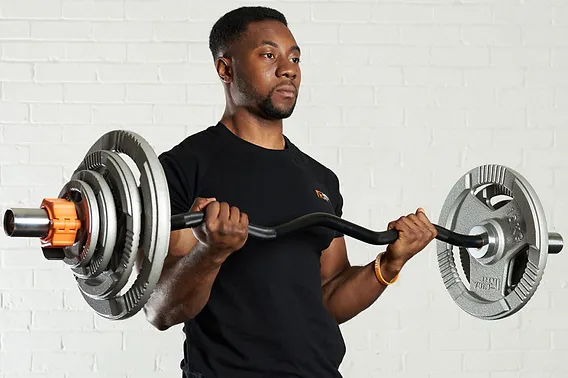
The barbell bicep curl is a classic exercise that effectively targets both heads of the biceps. It’s a great starting point for building mass and strength.
- How to Perform:
- Stand upright with your feet shoulder-width apart.
- Hold a barbell with an underhand grip, arms fully extended.
- Curl the barbell towards your shoulders while keeping your elbows close to your torso.
- Lower the barbell back to the starting position.
- Tips: Avoid using momentum by swinging your back. Keep the movement controlled for maximum activation.
2. Dumbbell Bicep Curl
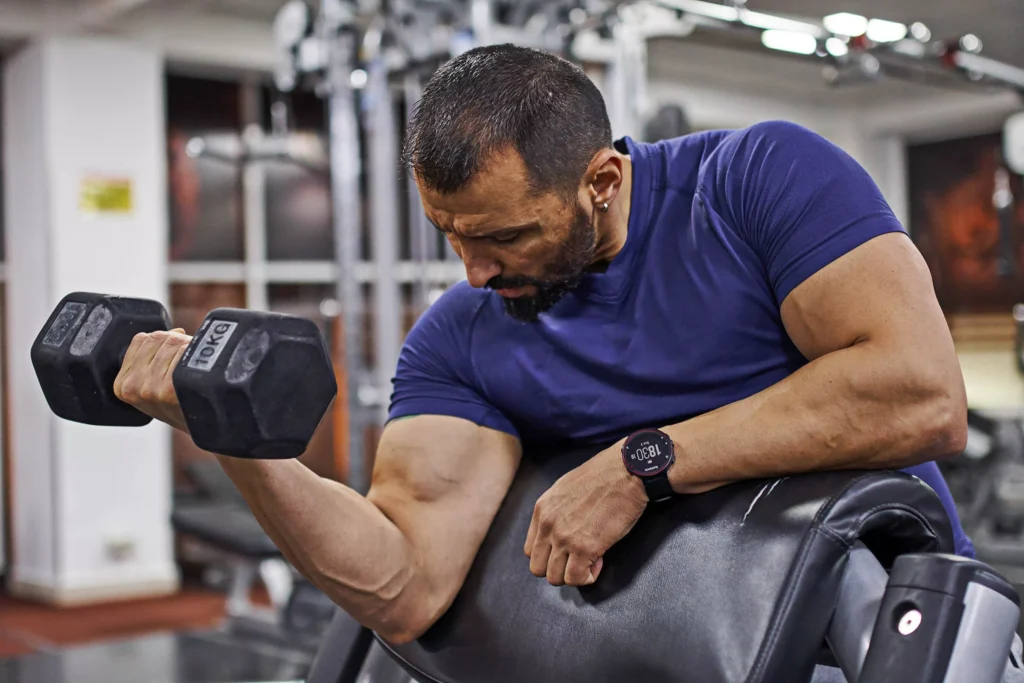
This versatile exercise allows you to work each arm independently, correcting any strength imbalances.
- How to Perform:
- Hold a dumbbell in each hand with an underhand grip.
- Curl one dumbbell towards your shoulder while keeping the other arm stationary.
- Lower the dumbbell and repeat with the other arm.
- Tips: Rotate your wrists as you curl for additional forearm engagement.
3. Hammer Curl
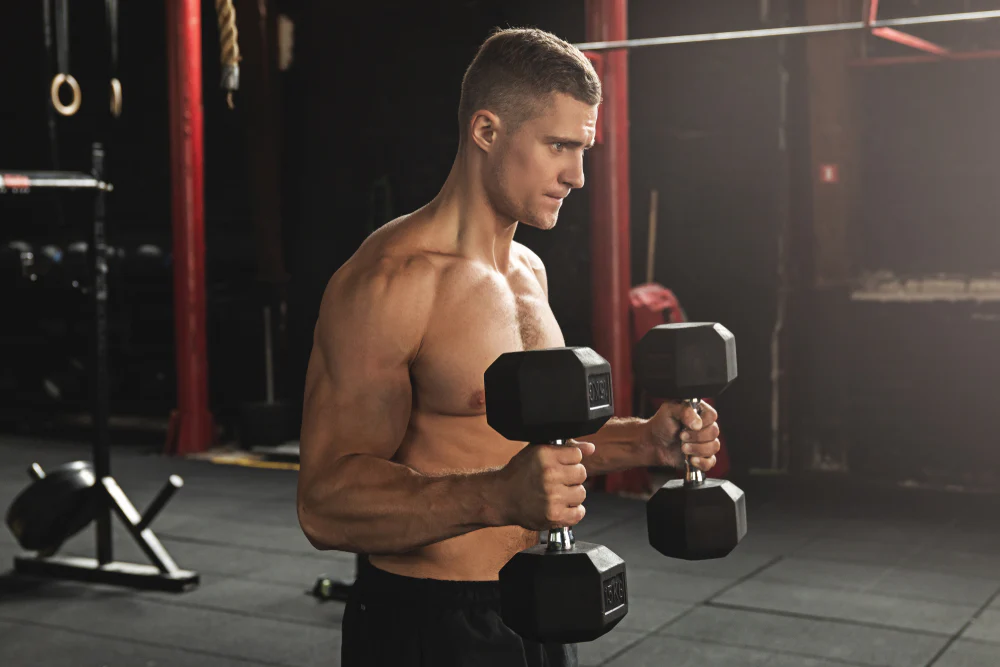
Hammer curls target the brachialis muscle, located beneath the biceps, adding thickness to your arms.
- How to Perform:
- Hold a dumbbell in each hand with a neutral grip (palms facing inward).
- Curl the dumbbells towards your shoulders while keeping your palms facing each other.
- Lower the dumbbells back to the starting position.
- Tips: Keep your elbows stationary and focus on squeezing the biceps at the top of the movement.
4. Concentration Curl
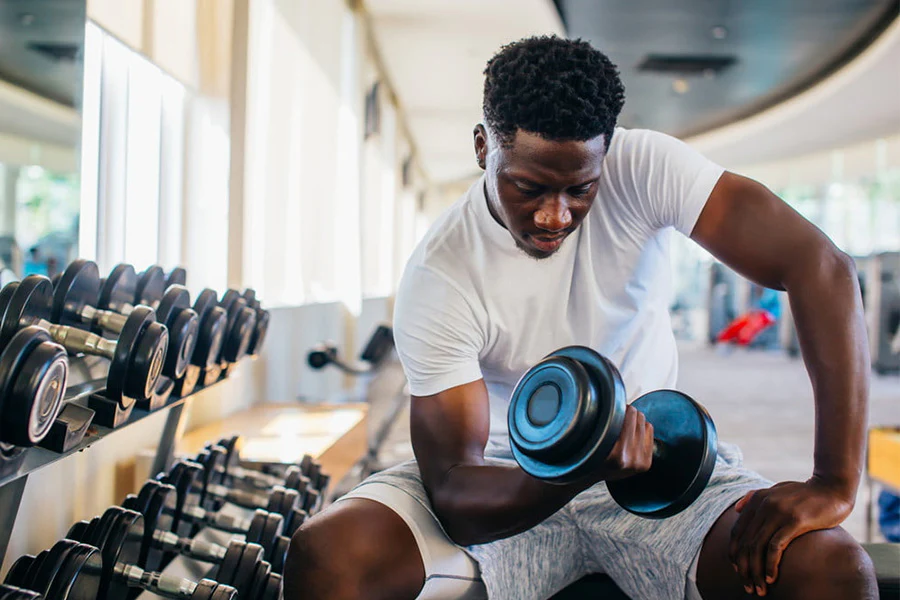
This isolation exercise emphasizes the biceps peak, helping you achieve that iconic arm shape.
- How to Perform:
- Sit on a bench with your legs apart and lean forward slightly.
- Rest your elbow on the inside of your thigh.
- Curl a dumbbell towards your shoulder and lower it slowly.
- Tips: Use a lighter weight to maintain strict form and avoid engaging other muscles.
5. Preacher Curl
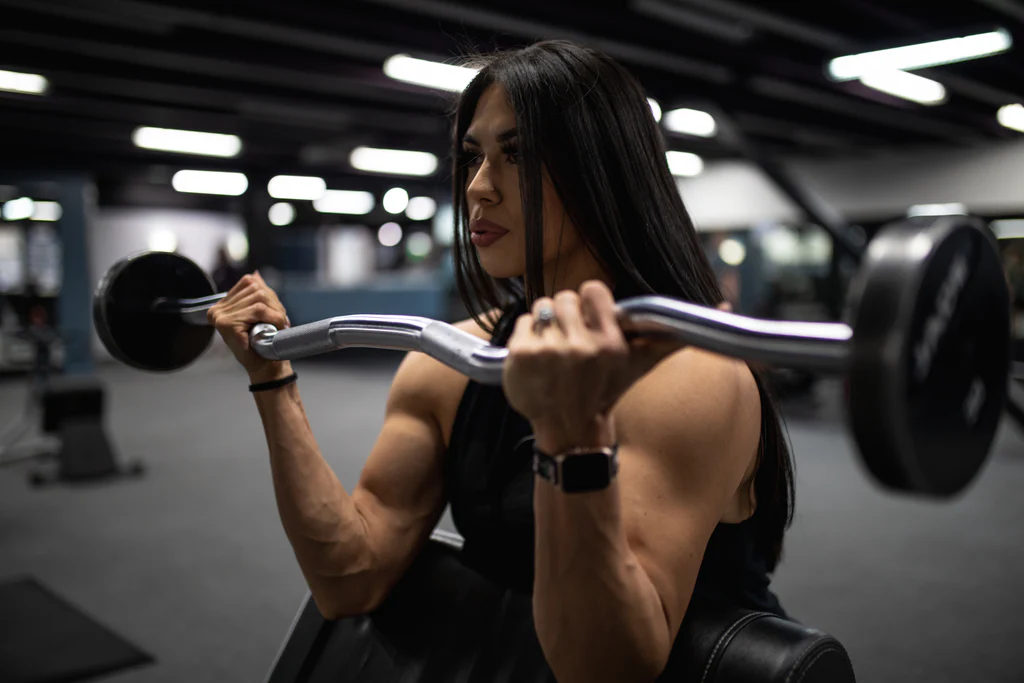
The preacher curl minimizes momentum and isolates the biceps, making it a great exercise for building size and definition.
- How to Perform:
- Sit at a preacher bench with your arms resting on the pad.
- Hold an EZ bar or dumbbell with an underhand grip.
- Curl the weight upward and lower it under control.
- Tips: Avoid fully locking out your elbows at the bottom to maintain tension on the biceps.
6. Chin-Ups

While primarily a back exercise, chin-ups heavily engage the biceps and are excellent for overall arm strength.
- How to Perform:
- Grab a pull-up bar with an underhand grip, hands shoulder-width apart.
- Pull yourself up until your chin is above the bar.
- Lower yourself back down with control.
- Tips: Keep your core tight and avoid swinging for better biceps engagement.
7. Cable Bicep Curl
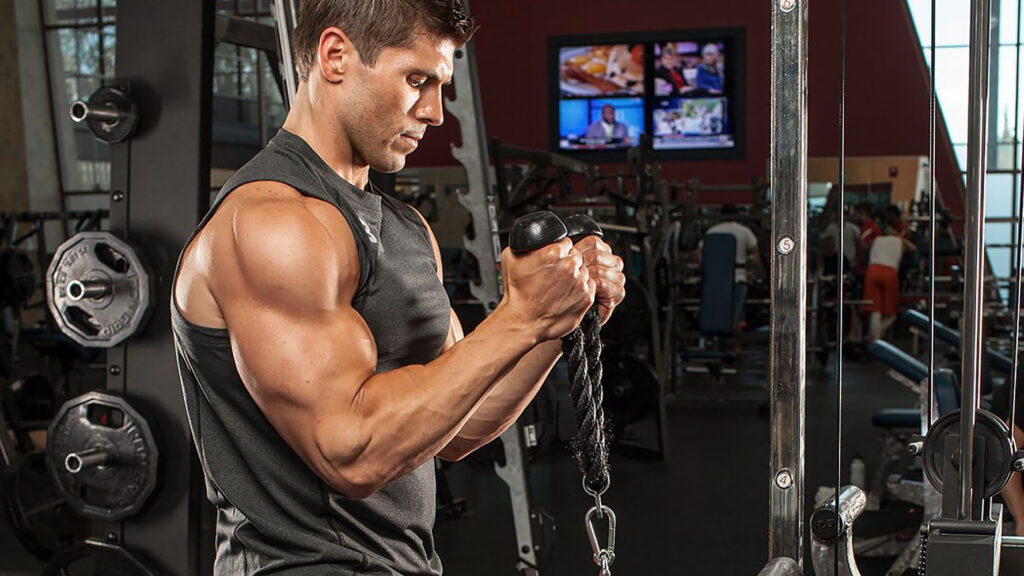
Cable curls provide constant tension throughout the movement, enhancing biceps activation.
- How to Perform:
- Attach a straight bar to a cable machine at the lowest setting.
- Hold the bar with an underhand grip and step back slightly.
- Curl the bar towards your shoulders and slowly lower it back.
- Tips: Adjust the weight to maintain proper form and control.
8. Zottman Curl
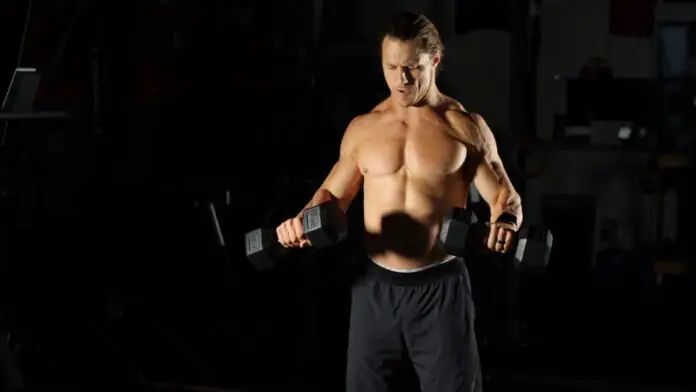
The Zottman curl combines a standard bicep curl with a reverse curl, targeting both the biceps and forearms.
- How to Perform:
- Hold a dumbbell in each hand with an underhand grip.
- Curl the weights up, then rotate your wrists to a palms-down position at the top.
- Lower the dumbbells slowly in the reverse curl motion.
- Tips: Use a moderate weight to maintain good form throughout.
9. Incline Dumbbell Curl
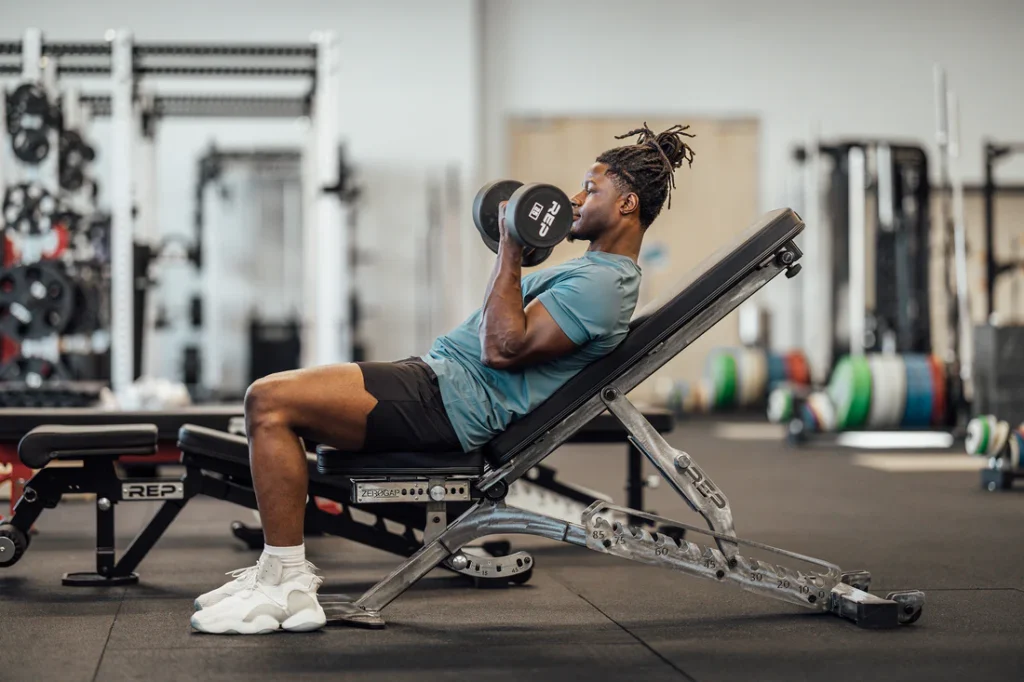
This exercise targets the long head of the biceps by stretching the muscle at the start of the movement.
- How to Perform:
- Set an adjustable bench to a 45-degree incline.
- Sit back with a dumbbell in each hand, arms fully extended.
- Curl the dumbbells towards your shoulders and lower them back.
- Tips: Keep your upper arms stationary to focus on the biceps.
10. Spider Curl
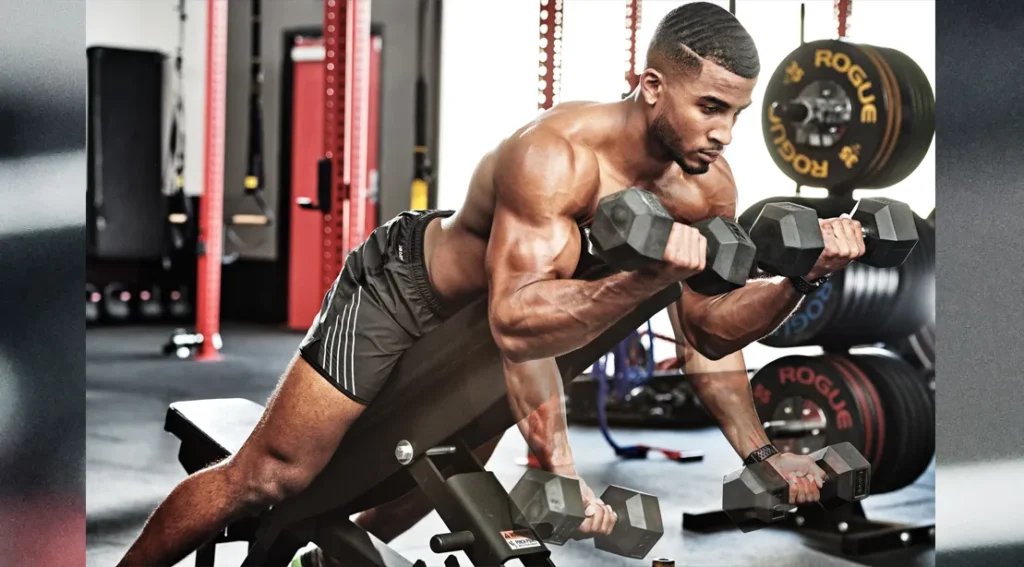
Spider curls are great for isolating the biceps and achieving a full range of motion.
- How to Perform:
- Lie chest-down on an incline bench, letting your arms hang freely.
- Hold a barbell or dumbbells with an underhand grip.
- Curl the weights towards your shoulders and lower them slowly.
- Tips: Focus on the mind-muscle connection for maximum activation.
Tips for Maximizing Biceps Growth
- Progressive Overload: Gradually increase the weight, reps, or intensity to challenge your muscles.
- Proper Form: Avoid swinging or using momentum to ensure the biceps do the work.
- Rest and Recovery: Allow your muscles to recover by taking rest days and getting adequate sleep.
- Nutrition: Fuel your body with enough protein and calories to support muscle growth.
- Consistency: Stick to a regular workout routine to see noticeable results.
Frequently Asked Questions (FAQ)
How often should I train my biceps?
It’s recommended to train your biceps 1-2 times per week. Overtraining can lead to fatigue and hinder progress.
Can I build bigger biceps without weights?
Yes, bodyweight exercises like chin-ups and resistance bands can effectively build biceps, though weights offer more variety and progressive overload.
How long does it take to see results?
With consistent training and proper nutrition, noticeable improvements can appear in 4-8 weeks.
Should I train my biceps and triceps on the same day?
Yes, combining biceps and triceps exercises in a single workout can be effective for arm development.
What’s the best rep range for biceps growth?
Aim for 8-12 reps per set, as this range is optimal for hypertrophy (muscle growth).
Building Your Path to Bigger Arms
Bigger biceps are achievable with the right combination of exercises, form, and consistency.
By incorporating these top 10 biceps exercises into your routine and following the tips provided, you’ll be well on your way to stronger, more defined arms.
Remember to stay patient, as progress takes time and dedication.
Now, hit the gym and start building those biceps!
